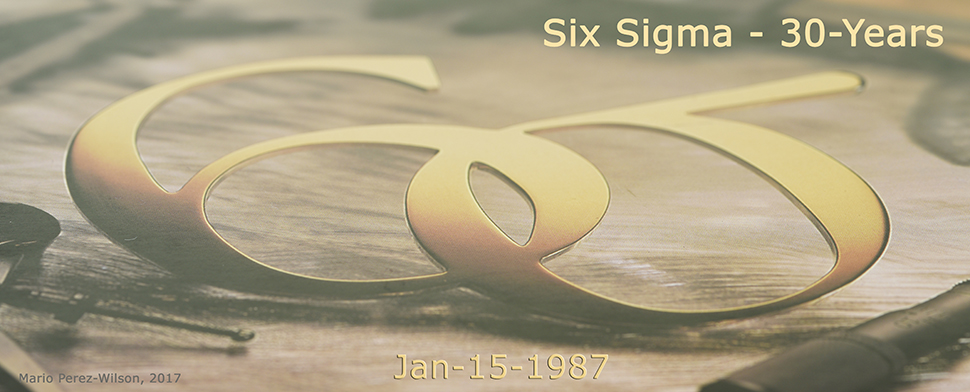| What is Six Sigma? |
| Six Sigma is an optimized level of performance approaching zero-defects in a process producing a product, service or transaction. It indicates achievement and maintenance of world-class performance.
Motorola, on Thursday, January 15, 1987, defined Six Sigma as having plus or minus six sigmas (±6s) or standard deviations within specification limits. In other words, given a particular product characteristic, which has a design specification, that design specification has an upper specification limit, USL, and a lower specification limit, LSL, these two limits demarcated a design tolerance. Motorola held the design tolerance to be such, that it should allow to fit twelve (±6) sigmas or twice the process variation.
Theoretically, under the above stated condition, a process would have Cp=2, Cpk=2, in-process yield around 99.9999998%, and a defective rate below 0.002 parts-per-million (PPM). For all practical purposes, ± Six Sigma implies zero-defects.
|
| What is the objective of Six Sigma? |
| To reduce the process variation, so that twelve standard deviations will fit within specification limits, will in turn minimize or eliminate defects from the process.
By further centering the mean or average to the middle of the specification limits, will maximize process capability, making the process more robust to minor fluctuations.
|
| How you achieve Six Sigma? |
You achieve Six Sigma by following a "tried, true and tested" methodology that allows you to characterize, optimize and control the process you wish to improve.
A sound Six Sigma methodology will provide a proven approach, a step-by-step procedure easily followed by all. We offer the original methodology followed by Motorola, from 1987 through 1992, leading to a savings of $2.2 billions.
"Mario Perez-Wilson was the first to actually put course materials to Six Sigma."
Gary Cone, March 30, 2012 at 1:52 pm. See: www(dot)isixsigma(dot)com/topic/twenty-five-years-of-six-sigma/
|

|












